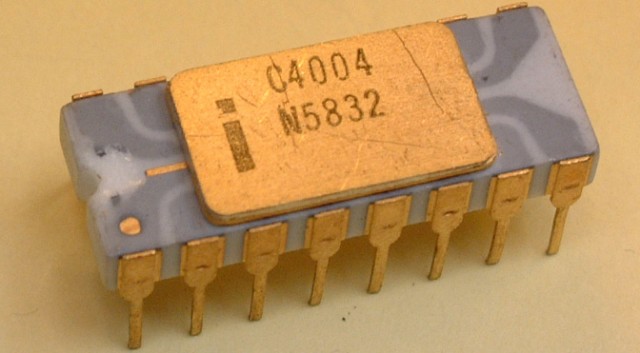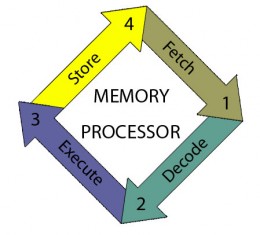One piece of technology we use almost every is one that most of us take for granted. This piece of technology is perhaps the one that jump-started the digital age, the computer. Less than 15 years ago, having a household computer was considered a luxury, though still extremely useful at the time, the rest of the world has only just scraped the surface of the technology we have with the computer. Now, almost every household has a computer. For some, multiple.
In 1939, Hewlett-Packard was Founded. Their first invention was the HP 200A Audio Oscillator, which became wildly popular among testers and engineers. Walt Disney Pictures bought eight of the 200B model to create sound effects for the 1940 movie “Fantasia.”
Past the 1940s and beyond, the computer found many more uses. However, some of these uses were restricted to the government. Computers were very expensive and would did not fit the household life just yet.
It wasn’t until 1963 when Hewlett-Packard entered the general purpose computer business with its HP-2115 for computation. This computer offered many of the functions of a larger computer, and was fit to use in a common office. It supported a wide variety of coding languages, among them was BASIC, ALGOL, and FORTRAN.
(By Anthony Seigfried)
(By Anthony Seigfried)
Northbridge
Basic Info
A northbridge also called a host bridge is a microchip on some PC motherboards and is connected directly to the CPU and is responsible for tasks that require the highest performance. The northbridge is most of the tine paired with the southbridge of a computer. In systems where they are included, these two chips manage communications between the CPU and other parts of the motherboard, and constitute the core logic chipset of the PC motherboard.
Overview-
The northbridge typically handles communications among the CPU, sometimes RAM, PCI Express video cards, and the southbridge.Some northbridges also contain video controllers or Graphics and Memory Controller Hub (GMCH) and Intel systems. Because different processors and RAM require different signaling, a northbridge chip will typically work with only one or two types or classes of CPUs and generally only one type of RAM.
Name-
The name comes from its location on the motherboard if you compared it to an actual map. The CPU would be connected to the chipset via a fast bridge (the northbridge) located north of other system devices as drawn. The northbridge would then be connected to the rest of the chipset via a slow bridge (the southbridge) located south of other system devices as drawn.
(By Eliot Manion)
Southbridge
The Southbridge is a small, flat, chip found in all computers, and is one of the most important parts of the computer. It carries many duties involving the connections of the computer to various things outside the computer. They started being used when the first computers were being made, because, being such an important part, the computer couldn’t function without it.
A Southbridge chipset handles all of a computer's I/O functions, such as USB, audio, serial, the ROM chip, the interrupt controller, and the IDE channels. Different combinations of Southbridge and Northbridge chips are possible, but these two kinds of chips need to work together, or they will not function properly. There is no universal standard for cooperation between different core logic chipset designs. Usually, the interface between a northbridge and southbridge is the PCI bus. The main bridging interfaces used now are UMI (Advanced Micro Devices Inc.) and DMI (Intel).
The main purpose of the Southbridge chip of a computer, is the gathering of data. The Southbridge usually handles the slower processes, such as connecting a USB or connecting to a network. One good way of discerning the Southbridge from the Northbridge, is that the latter connects directly to the CPU, whereas the Southbridge can only connect through the Northbridge.
The Southbridge connects to the Northbridge the ROM chip and the Super I/O chip, though with the latest technology, the Southbridge and I/O chips are often combined. So while it is a very important part, the technology is so advanced that it can be combined with another chip and still function at a high capacity.
(By Sam Stahl)
Central Processing Unit
The Central Processing Unit is one of the most important components of a computer. The CPU is what converts the input to the output. It is also in charge of the clock, which refers to the frequency that the CPU is running at. For every time the clock completes one cycle, an instruction has been carried out. The CPU has four main jobs that it must accomplish, fetch, decode, execute, and write back.
The first thing the Central Processing Unit must do is retrieve an instruction to use from its program memory. Once it has found the necessary information, it can begin to decode. The CPU is designed to understand a certain set of commands, and all code is broken down into assembly language and then turned into binary code so the CPU can manipulate it to complete a task. The next step is executing, where the data actually begins to be processed. During the executing phase, one of three things can be happening. The Central Processing Unit can be doing calculations, moving data from one memory unit to another, or jumping to a different address if necessary. The last step that the CPU must do is write back. The CPU takes the output and writes it into the computer’s memory. After it has written the output into the computer’s memory, the CPU is ready to start the process over again.
The Turing Machine, which is considered to be the first modern computer was created in 1936, but the first CPU was not made until 1971. On November 15th 1971 Intel created the first Central Processing Unit, the Intel 4004. This single-chip CPU was developed by Federico Faggin, Ted Hoff, and Stanley Mazor. Throughout the forty three years since it was first developed, the Central Processing Unit continues to evolve and improve.


![What Is A CPU and What Does It Do? [Technology Explained] image clock What Is A CPU and What Does It Do? [Technology Explained]](https://lh4.googleusercontent.com/w-TF-1q3w4l17jntcT-gASo20_lOmV030Y9sVEqs3TB6BQF3D4EDZYF_ccfTeZdk8HuwO74tQqOxkaIn1rRsY-MGGKo9Q2_nRhlVAypEO6yvfNumMppYNAv0hcwp8nDSsw)

The Turing Machine, which is considered to be the first modern computer was created in 1936, but the first CPU was not made until 1971. On November 15th 1971 Intel created the first Central Processing Unit, the Intel 4004. This single-chip CPU was developed by Federico Faggin, Ted Hoff, and Stanley Mazor. Throughout the forty three years since it was first developed, the Central Processing Unit continues to evolve and improve.
(By Jenna Lieske)
Bibliography
- "Intel 4004." ExtremeTech. N.p., n.d. Web. 30 Aug. 2014. <http://www.extremetech.com/computing/105029-intel-4004-the-first-cpu-is-40-years-old-today>.
- "The Central Processing Unit (CPU)." Teach-ICT OCR GCSE Computing - the Central Processing Unit (CPU). N.p., n.d. Web. 31 Aug. 2014. <http://www.teach-ict.com/gcse_computing/ocr/212_computing_hardware/cpu/miniweb/pg7.htm>.
- "Choosing a Gaming CPU at 1440p: Adding in Haswell." RSS. N.p., n.d. Web. 30 Aug. 2014. <http://www.anandtech.com/show/6985/choosing-a-gaming-cpu-at-1440p-adding-in-haswell->.
- "What Are the Main Functions of a CPU?" HubPages. HubPages, n.d. Web. 28 Aug. 2014. <http://hubpages.com/hub/What-are-the-basic-functions-of-a-CPU>.
- "Upgrade a CPU." The High Tech Society. N.p., n.d. Web. 28 Aug. 2014. <http://thehightechsociety.com/how-to-upgrade-a-cpu-pc/>.
0 comments:
New comments are not allowed.